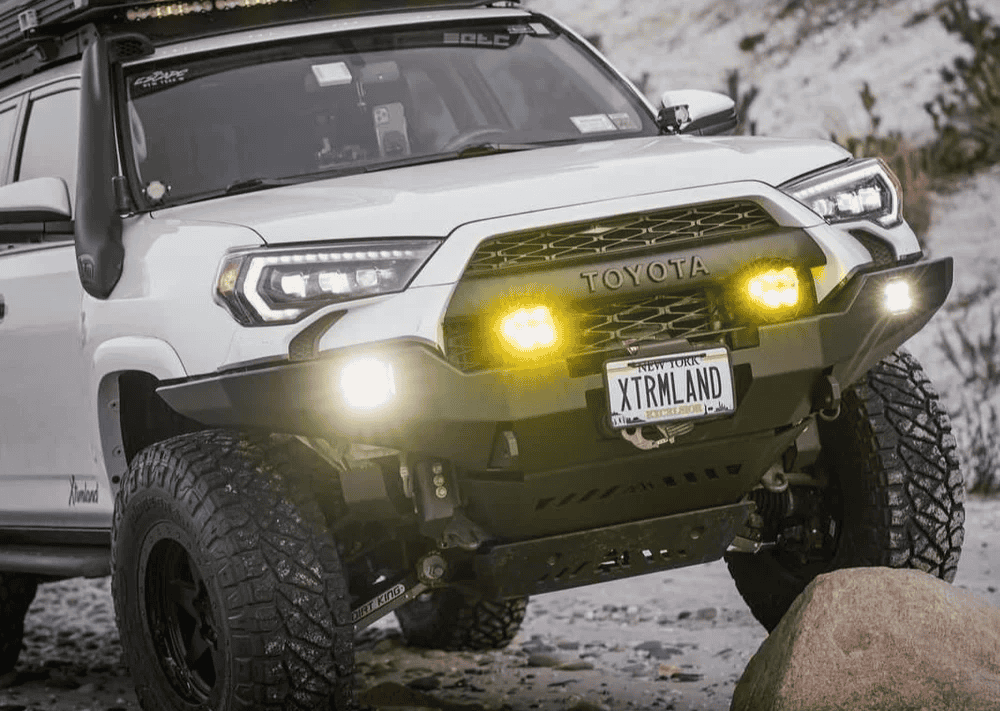Overland Vehicles

Every smart off road build starts with a systems mindset. You are balancing traction, clearance, durability, and control while staying within safe weight limits. The right sequence protects your wallet and your vehicle. Focus first on the parts that touch the ground and the components that carry the load.
Learn about off road upgrades on rocky terrain with proper tire fitment, suspension tuning, and armor for safer travel
Tires deliver the single biggest boost in real trail performance. Size affects ground clearance and approach, breakover, and departure angles. Choose a load rating that matches your vehicle weight, gear, and tow needs. All terrain tread favors varied surfaces and daily driving, while mud terrain tread adds bite in clay, ruts, and loose rock but increases noise and rolling resistance. Larger diameter tires alter effective gearing, speedometer readout, and braking force, so plan suspension and gearing together.
Suspension must match real world payload. Springs carry weight and set ride height, shocks manage motion and heat. Proper damping keeps the tire planted over chatter and washboards while preventing harsh bottoming on ledges. After lifting, correct alignment is critical for stability and tire life. Verify caster on solid axle trucks, camber and toe on independent setups, and maintain safe angles for CVs and driveline components. Sway bar disconnects can add articulation when crawling, then reconnect for highway manners.
If larger tires bog your rig on climbs or highway grades, consider axle regear to restore power band and transmission shifting. Locking differentials improve traction when one wheel is light or in the air. Selectable lockers provide on demand control, while automatic lockers act without driver input. Limited slip units help in mixed traction but may not replace a true locker on technical trails. Guard against excessive driveline angles after lift and verify driveshaft length and clearance through full suspension travel.
Protection comes next. Skid plates shield vulnerable parts like the oil pan, transmission, transfer case, and fuel tank. Rock sliders support vehicle weight on ledges and deflect boulders away from rocker panels. Quality front and rear bumpers can improve approach and departure angles while adding rated recovery points.
Equip a winch sized for at least one and a half times vehicle weight. Synthetic rope is lighter and easier to handle, while steel cable is more resistant to abrasion and heat. Use soft shackles and rated recovery points that mount directly to the frame or reinforced structure. Pack recovery boards for sand and snow, a tree saver, snatch block for mechanical advantage, and gloves. Practice safe line handling and load direction before you need it on a real obstacle.
Auxiliary lighting improves safety when night falls or storms roll in. Pair a wide lens fog pattern low on the bumper for dust and snow with a driving pattern higher for down trail visibility. Reserve spot beams for distance work. Aim lights to avoid glare and check local rules for public road use. Do not forget a reliable rear work light for camp setup and repairs.
Electrical demands increase with fridges, inverters, air compressors, and lighting. A healthy charging strategy protects batteries and electronics. High output alternators, quality wiring, and a managed distribution panel keep loads stable. Solar can extend battery life at camp, but charging while driving remains the backbone of a reliable system.
Deflating tires increases the contact patch and smooths rough terrain, improving comfort and traction. Carry an onboard compressor or a high flow portable unit to air back up for highway speeds. Beadlock wheels can secure the bead at very low pressures, but check local requirements and maintenance needs. As an alternative, bead grip or safety bead designs offer more retention without the complexity of true beadlocks.
Communication is a safety tool. GMRS radios provide simple, license light group comms with good range in mixed terrain. Ham radio offers longer reach and repeater access for those who are licensed. Keep paper maps in the truck, run updated offline maps on a dedicated device, and double check waypoints and fuel range before committing to backcountry routes.
Balancing capability, comfort, and safety requires thoughtful sequencing. Start with accurate weights, then match tires and suspension to that payload. Add armor to protect critical components, recovery gear to manage mistakes, and the power and comms to keep you connected and operational. The goal is a rig that drives straight on pavement, moves predictably on the trail, and gets you home every time.
Professional installation and integration matter when electronics, high current circuits, and structural components are involved. Done right, upgrades preserve braking performance, maintain proper alignment, and keep vehicle systems happy. If you are mapping an all terrain build, explore our Overland rigs approach for ideas that match real travel needs. When you are ready for a tailored plan, our team can handle design, fabrication, wiring, and full installation through our Custom overland upfit. If you want to understand how we work, see what sets us apart on Why choose OZK Customs.
At OZK Customs, we build complete adventure vans and overland rigs, plus partial upfits for armor, suspension, power, lighting, racks, and more. We listen first, design a solution around your routes and gear, and deliver a clean handoff with on site orientation so you leave confident and ready for the next trail.
Ready to transform your vehicle into a trail proven rig built right the first time? Our team designs, fabricates, and installs upgrades that fit your terrain, payload, and travel style. Tell us your goals and we will map a clear plan, timeline, and cost so you can hit the trail with confidence.
ADDRESS:
6159 E Huntsville Rd, Fayetteville, AR 72701
PHONE:
(479) 326-9200
EMAIL:
info@ozkvans.com